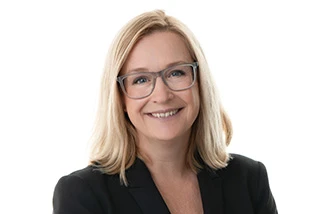TPT calls for industrywide effort to boost DC investment
TPT’s DC Director, Philip Smith, says fees remain the biggest barrier to master trusts investing in private markets.
Link to original article on Private Markets Profile:
https://privatemarketsprofile.com/tpt-calls-for-industrywide-effort-to-boost-dc-investment/
TPT Retirement Solutions provides both defined contribution (DC) and defined benefit (DB) workplace pensions in master trust arrangements. It has total assets of approximately £11.1 billion, with around £7.5 billion in DB and £3.6 billion in DC. It launched a DC post-retirement product in June that allows members to draw down their pension pot in inflation-linked income that lasts until they are 95 years old.
Philip Smith leads TPT’s DC business, focusing on strategy and proposition development. He joined TPT in 2020 with more than 25 years’ experience in the DC pension industry, including roles at PwC and at Buck.

What is the appropriate role for private markets in DC funds?
Smith: DC master trusts have traditionally focused on getting costs down, but the industry and Rachel Reeves recognised this drove them to offer passive solutions at the expense of those that potentially offer better value for money.
Our DC investment structure is based on target-date funds (TDFs) that run until members are 95 years old. We adjust the asset allocation at various points on the journey, according to the members’ needs and the views of the investment manager. We allocate to private market assets through the life of the TDF. For example, private credit might still be appropriate even as the member moves into retirement.
We’ve also been investing in private markets for some time in both our DC and DB funds. We view them as a risk diversifier and a way of improving risk-adjusted returns.
Some industry participants suggest creating so-called ‘premium’ defaults with private markets allocations and higher fees. What do you think about these?
Smith: I don’t think they’re appropriate, especially in the context of the Value for Money framework. Are you providing all your members with the best default you possibly can? Our philosophy has always been to provide the best value for money, so we don’t have a cheap default and an expensive one. We have a single default.
Any investment made must align with members’ interests, not simply support government ambitions.
Given TPT has invested in private markets for some time, has the Mansion House Accord had an impact?
Smith: It has had a positive impact on the debate around cost versus value, and highlighted the race to the bottom that’s occurred on fees.
As a stated ambition, we’re supportive of the accord as it sets the tone for delivering value to members within a more diversified investment strategy. It certainly kicked off the debate and now has 17 signatories. The large UK pension providers, with a couple of big exceptions, have all signed it.
How strongly are you guided by the 5% UK and 5% global allocations?
Smith: The overriding principle that guides all investment decisions is the Trustee’s fiduciary duty. Within that, our investment managers are comfortable they can meet the commitments over time.
Do you agree with the differentiation between ‘productive’ and other assets? Is the differentiation perfectly aligned with the member’s interest?
Smith: What is a productive asset? In this context, it probably means assets that contribute to the UK’s productive capacity and economic growth. The Government recognises that the supply of these types of investable assets is important, and within a diversified investment strategy there is no reason why investment in productive assets wouldn’t be aligned with member’s interests.
The push for master trust consolidation is running alongside the accord, with the government talking about £25+ billion megafunds. Is this a meaningful figure?
Smith: The Government decided on £25 billion after looking at what Australia, Canada and some other jurisdictions have done. I’m not sure their models always port over perfectly to the UK as we’ve got a very different set of circumstances. The UK market is already highly consolidated, more consolidated than Australia’s. The industry did not support megafunds, as there is a feeling that the Government’s policy objectives could be achieved within the existing highly-consolidated market.
We’ve already got an in-house investment team which has been investing in private market assets on the DB side for many years. We don’t need £25 billion of assets to invest in private markets. It’s not necessary.
Do you think the aim is to create funds big enough to match the Government’s ambitious infrastructure plans?
Smith: If you look at the pool of DC money available and the commitments made by the Mansion House signatories, the government can achieve its policy objectives without forcing the creation of £25 billion megafunds.
Any investment made must align with members’ interests, not simply support government ambitions – for example, would asking UK pension funds to back HS2 have been a good use of members’ money? The agenda has more to do with getting money into attractive opportunities where the UK has not traditionally excelled. We’re just not as good at getting money into productive assets as other countries.
Australian super funds have picked up some great opportunities. But if a big wave of DC and LGPS money joins the chase for similar assets, would private markets maintain higher returns than public ones?
Smith: The demand-supply equation is very important. Our investment managers focus is on identifying the opportunities that have the greatest potential for enhancing the risk-adjusted return for our members. There are attractive opportunities in the private credit space.
Is the DC market well served with products, or is more development needed?
Smith: In the consultation ahead of signing the accord, the industry clearly asked for the Government to commit to ensuring there is an investable pipeline of private market assets. There is a huge amount of interest, but this must translate into investable products. The journey has begun and more opportunities are coming on-stream – but there’s definitely more work to do.
The industry could potentially be chasing a small pool of assets, in which case a wider pool would need to be made available. I’m less worried about fund structures than the pipeline – we don’t need LTAFs as we can manage liquidity ourselves.
What role should the Government play?
Smith: The Government has clearly signalled it believes some aspects of regulation have gone too far and are restricting economic activity. It says it wants to create a policy environment that encourages and enables investors to drive growth.
It needs to create the same entrepreneurial spirit that we see outside the UK. The policy environment needs to ensure opportunities are created in the UK and supports companies from startup through to IPO. It also needs to ensure that UK pension funds benefit from these opportunities, much like funds overseas do.
What barriers still exist for investment in private markets?
Smith: The problem has been price. Historically, the cost of accessing most private market asset classes has been too high. Opportunities have been accessible to DB schemes because they are typically more concerned with outcomes than price.
The challenge in DC is to provide value for money. Can we shift the DC discussion from being about low costs to outcomes and value? If we can do that, the potential pool for private market assets would widen. The Government recognised this throughout its consultation. While opportunities have historically been available, costs have hampered the ability to include them within DC funds.
The DC market recognises that adding private assets can add real value to member outcomes and can be worth the higher fees. But progress will depend on investment products with cost structures that are more compatible with DC funds’ requirements – as well as being generally lower.
What is the larger problem, total fees or the way they’re structured?
Smith: A recent Barnett Waddingham report found the average cost for members in large DC schemes is now under 30 basis points (bps), and that includes everything from investment and administration to engagement. If you charge 21 bps, how can you get private market assets into your portfolio? Increasing scale may help, but not necessarily. Costs are still a challenge for everybody.
We are still at the beginning of this journey. Private markets can bring greater diversification and risk-adjusted returns for the benefit of members. It’s in the interest of everyone that we get it all working. The industry collectively needs to rise to the challenge.
Related news & insights
-

DB Consolidation Mythbuster
Our Defined Benefit Consolidation Mythbuster draws out the most common misconceptions about consolidation to help you make informed decisions about the future of your scheme and the benefits it may bring to you and your members. -

Four independent advisers appointed to support Trustee Board of TPT’s new run-on DB Superfund
The Trustee Board has appointed Gowling WLG to provide legal advice and Mercer as scheme actuary. In addition, LCP will provide independent investment oversight and EY will be the Superfund’s risk advisor. -

TPT hires new Head of Consultant Relations
A central part of Katherine's brief will be to identify and build relationships with employee benefit consultants (EBCs) across the full spectrum of consolidation vehicles TPT offers. -

TPTIM signs up first external fiduciary management client
Dalriada Trustees Limited has become a fiduciary management client on behalf of Paradigm Housing’s Defined Benefit (DB) Pension Plan. This marks the first time TPTIM has co-signed a Fiduciary Management Agreement with an external trustee.
